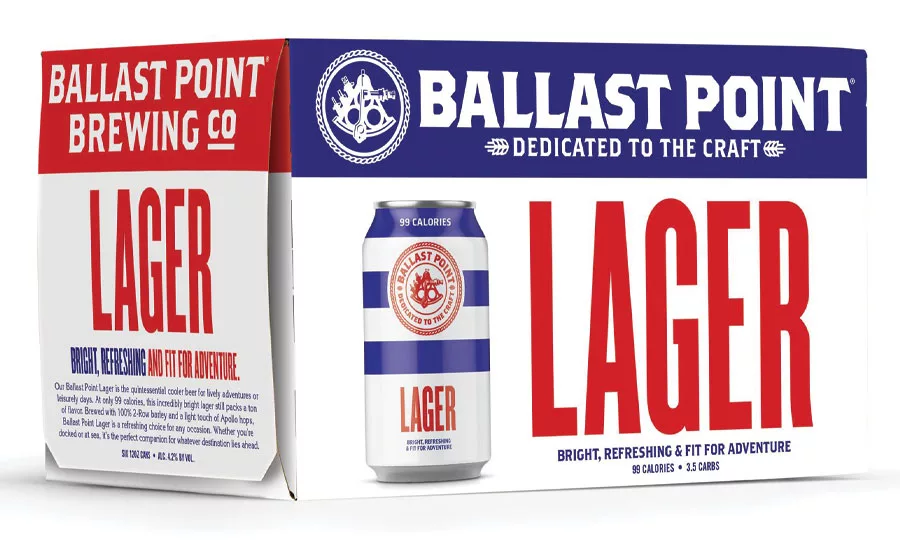2020 Beer Report: Maturation brings new competitive landscape for craft beer market
New styles, micro-breweries help drive beer segment

For horticulturists, excitement ensued when a titan arum, also known as the corpse flower, reached full maturation and bloomed at the Chicago Botanic Garden in 2015. Since then, the suburban botanic garden has garnered media attention with blooms of corpse flowers in recent years because a bloom for such a plant is rare in the wild and at a botanic garden. Although maturation in a plant species can be a time for celebration, the phrase takes on different meaning when it comes to emerging beverage markets.
In the past two decades, craft beer has been the darling of the beverage industry as the domestic beer segment produced, at times, double-digit growth in sales and volume. As that performance has decelerated to single digits, analysts suggest this could be a sign that the market has reached a maturation point.
“While craft beer still remains popular with consumers, and has consistently grown as a product segment of the overall breweries industry, the explosive growth experienced throughout the 2000s and 2010s has begun to slow,” says Chris Lombardo, senior analyst and team lead for Los Angeles-based IBISWorld. “Normalization is expected with niche product offerings such as craft. This doesn’t necessarily represent declining demand for craft beer; instead, it is indicative of what occurs when demand has largely been satisfied.
“When craft breweries began gaining momentum, they were still a novel, new experience,” he continues. “Now that they have become a norm within the industry, they are experiencing similar competitive conditions that larger operators have historically dealt with, including competition among craft brewers, larger operators, imports and substitute products, such as wine and spirits.”
Brian Sudano, managing partner at New York-based Beverage Marketing Corporation (BMC), explains that craft beer’s slowdown cannot be pinpointed to one trend, but is the result of many, including health and wellness as well as the growth of the beyond beer market.
“Craft taste and mouthfeel are generally heavier, resulting in lower consumption per occasion,” he says. “[Also] health-and-wellness trends toward lower calories and better-for-you products (craft beer is generally high in calories); intensified fragmentation resulting in less brand loyalty; [and] innovation from within the beer industry, especially toward perceived healthier alternatives, e.g., hard seltzer.”
According to Chicago-based Information Resources Inc. (IRI), craft beer in total U.S. multi-outlets with convenience accounted for $4.3 billion in sales, up 2.8 percent in the 52 weeks ending Dec. 29, 2019. Case sales were up 2 percent during that timeframe.
(Brand family)
| Dollar Sales | % Change vs. Prior Year | Case Sales | % Change vs. Prior Year | |
| Blue Moon | $323,115,964 | -3.3 | 9,592,249 | -3.1 |
| Sierra Nevada | $264,059,153 | 4.2 | 7,380,294 | 2.4 |
| Samuel Adams | $231,345,055 | -9.6 | 6,751,609 | -11 |
| New Belgium | $222,154,295 | 10.3 | 5,970,024 | 8.2 |
| Lagunitas | $184,852,409 | 0.7 | 4,819,971 | 1.2 |
| Shiner | $126,934,428 | -5.1 | 3,805,453 | -4.8 |
| Leinenkugel Specialty | $126,552,916 | -16.2 | 3,964,133 | -16.9 |
| Founders | $109,251,989 | 5.8 | 3,356,318 | 6.1 |
| Elysian | $87,286,987 | 17.6 | 1,856,086 | 20.3 |
| Firestone | $84,259,833 | 20.8 | 2,439,040 | 19.3 |
| Total sales* | $4,344,109,934 | 2.8 | 114,434,189 | 2 |
*Includes brands not listed.
Source: Information Resources Inc. (IRI), Chicago. Total U.S. supermarkets, drug stores, gas and convenience stores, mass merchandisers, military commissaries, and select club and dollar retail chains for the 52 weeks ending Dec. 29, 2019.
Winning recipes
The craft beer market’s embracement of varying styles helped the segment reached the level that it’s achieved today, experts note.
“The diversification of beer styles continues to drive interest in the category, especially for those that like to experience different craft beer styles and variety,” BMC’s Sudano says.
According to New York-based Nielsen, India Pale Ale (IPA) remains the far and away leader among beer styles for craft as the hop-forward flavored style generated $1.3 billion in off-premise sales for the 52 weeks ending Dec. 28, 2019, a 3.3 percent increase.
Although coming from much smaller bases, craft beer is seeing more styles show steady growth, including American Lager (up 52 percent), Kölsch (up 10 percent) and Sour/American Wild Ale (up 16.4 percent).
Indeed flavor innovation was among the key takeaways noted by Chicago-based Mintel in its October 2019 report “Beer – US.”
“Flavor drives product choice with a resounding majority of beer drinkers, a fact that is demonstrated by the success of new product innovation featuring and often unique palates — fruity, spicy and all stops in between,” the report states. “Brands of any type can lean into flavor promotion guiding consumers to understand the subtle nuances and notes of product taste to set themselves apart.”
Another sub-segment within craft beer that has gained traction are low-alcohol/non-alcohol beers. According to Nielsen data, the craft beer style generated $2.3 million in sales for the 52-week period ending Dec. 28, 2019. Although this is a small portion within craft; it represented nearly an 800 percent year-over-year increase.
Analysts also are highlighting the impact that micro-breweries and taprooms are having on craft beer sales.
“Small, local craft brewers tend to fair better than their larger craft counterparts due to customer loyalty and price point,” IBISWorld’s Lombardo says. “Successful local craft brewers become integrated with their local communities, building trust and support. Since most craft brewers serve their products on location, these operators are able to provide ancillary services and offerings, such as live music, food trucks and games, to entice local consumers. Thus, these brewers become more than beer producers — they become a place consumers wish to frequent and patronize with return service.” BI
Looking for a reprint of this article?
From high-res PDFs to custom plaques, order your copy today!






